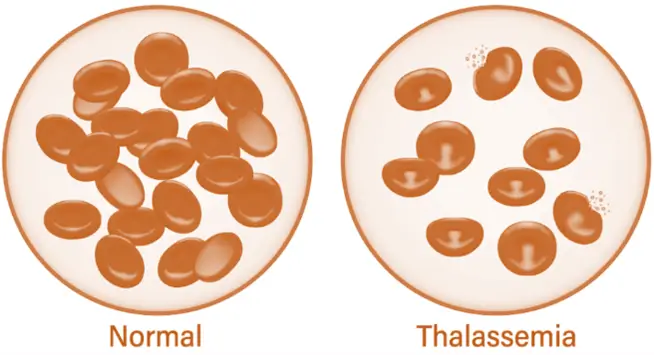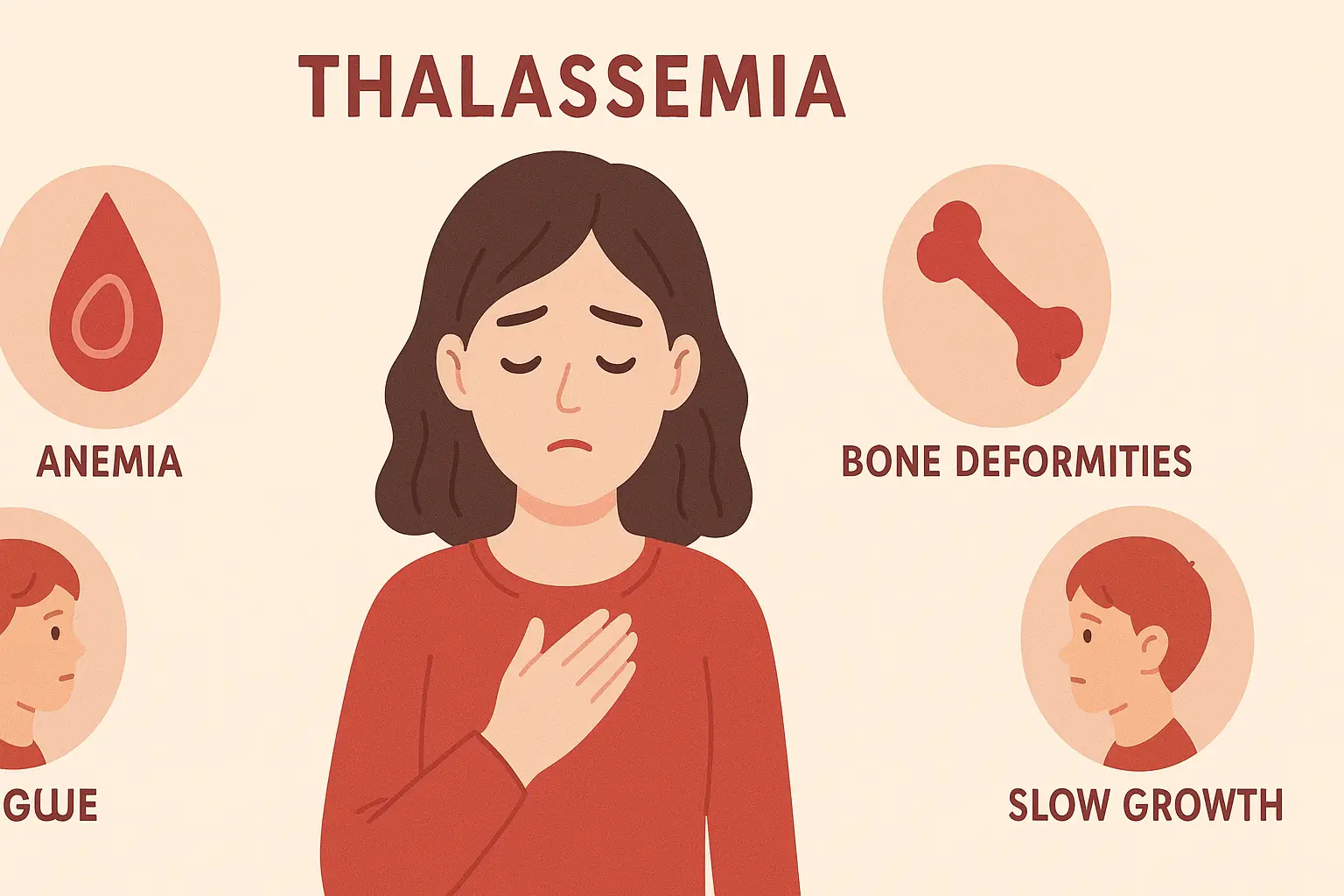Thalassemia Introduction
- Thalassemia is a group of inherited blood disorders caused by mutations affecting hemoglobin production.
- Results in reduced production of either alpha or beta globin chains, leading to imbalanced globin synthesis, ineffective erythropoiesis, and hemolysis.
- Categorized into alpha and beta thalassemia based on the affected globin chain.

This is a sample ad placement!
Types of Thalassemia
-
Alpha
- Caused by deletions or mutations in the HBA1 and HBA2
- Severity depends on the number of affected genes:
-
Beta
- Resulting from mutations in the HBB
- Classified by severity:
- Beta Thalassemia Minor (Trait): One gene affected; mild anemia.
- Beta Intermedia: Two genes affected; moderate anemia.
- Beta Major (Cooley’s Anemia): Two genes affected; severe anemia requiring regular transfusions.
Pathophysiology
- Imbalanced globin chain production leads to ineffective erythropoiesis and hemolysis.
- Excess unpaired globin chains damage RBC membranes, causing premature cell death.
- Chronic anemia stimulates erythropoietin production and bone marrow expansion, leading to skeletal deformities.
This is a sample ad placement!
Symptoms
- Symptoms vary based on type and severity:
-
Mild:
- Often asymptomatic or mild anemia.
-
Moderate to Severe:
-
Diagnosis of Thalassemia:
- It is diagnosed through:
- Complete Blood Count (CBC): Shows low hemoglobin and abnormal RBC indices.
- Hemoglobin Electrophoresis: Identifies abnormal hemoglobin types and quantifies hemoglobin fractions.
- Genetic Testing: Confirms mutations in globin genes.
- Peripheral Blood Smear: Shows microcytic, hypochromic RBCs with target cells and other abnormalities.
This is a sample ad placement!
Treatment:
- Treatment depends on severity:
-
Mild Thalassemia:
- Regular monitoring: usually no treatment needed.
-
Moderate to Severe:
- Regular Blood Transfusions: Maintain hemoglobin levels.
- Iron Chelation Therapy: Remove excess iron to prevent organ damage.
- Folic Acid Supplements: Support RBC production.
- Splenectomy: Removal of the spleen if enlarged.
- Bone Marrow Transplant: Potential cure for severe cases.
- Gene Therapy: Experimental treatment with curative potential.
-
Thank you for reading from Firsthope's notes, don't forget to check YouTube videos!

